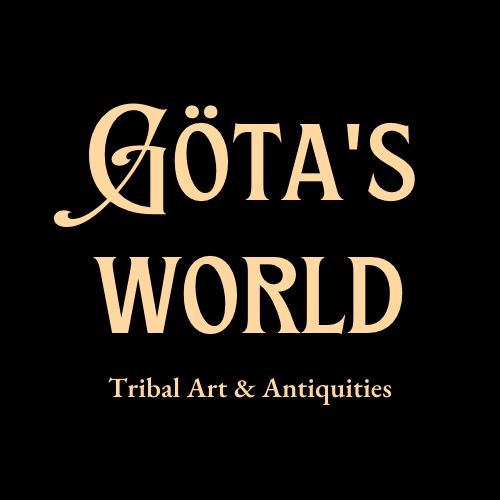Qing Dynasty Wooden Temple Figure of Caishen – Martial Form
Qing Dynasty Wooden Temple Figure of Caishen – Martial Form
Couldn't load pickup availability
Qing dynasty, mid. or late 19th century, Yunnan, China.
A magnificent and commanding temple figure of Caishen, the Chinese God of Wealth, depicted in his military form. Carved from a single block of camphor wood, this exquisite statue portrays the deity in a martial posture, embodying strength, affluence, and divine protection.
Caishen is adorned in elaborate armor with intricate detailing, complemented by a fine headdress. The armor’s vibrant vermillion lacquer, accented with black highlights and gilding, reflects the Chinese symbolism of happiness (red) and wealth (gold). His imposing visage, characteristic of Ming and early Qing artistry, features downcast eyes, a strong nose, pointed brows, and a flowing black beard. His sizable ears with lengthy lobes, signifying wisdom and holiness, frame his rounded, benevolent face, exuding both authority and prosperity.
The back of the figure conceals a cavity sealed with its original lid, preserving its ritual contents—seeds, beans, rice, and textile fragments—elements traditionally believed to infuse the statue with life and spiritual energy.
Caishen (Cái Shén), also known as Ts’ai Shen or Cai Boxing Jun, is a central figure in Chinese folk religion, Taoism, and some Buddhist practices. Worshipped as the bringer of wealth and fortune, he is often depicted in his martial form wielding an iron scepter or sword, capable of transforming stones into gold. Temple figures like this served as focal points for offerings and prayers, symbolizing prosperity and divine intervention in both temples and homes.
Dating to the Qing dynasty (1644–1912), this statue is a testament to the devotion, artistry, and cultural richness of the era. It stands as an extraordinary relic of Chinese religious practices, perfect for collectors and admirers of East Asian history and spirituality.
Moderate condition. Age-related heavy wear, fractures and chips. Hands missing. Remains of gilding, with loss and flaking to the lacquer, revealing the gesso and wood. Encrusted dark patina. Size approx. 25,3cm x 10,3cm x 5,8cm.
Provenance: Finnish private collection
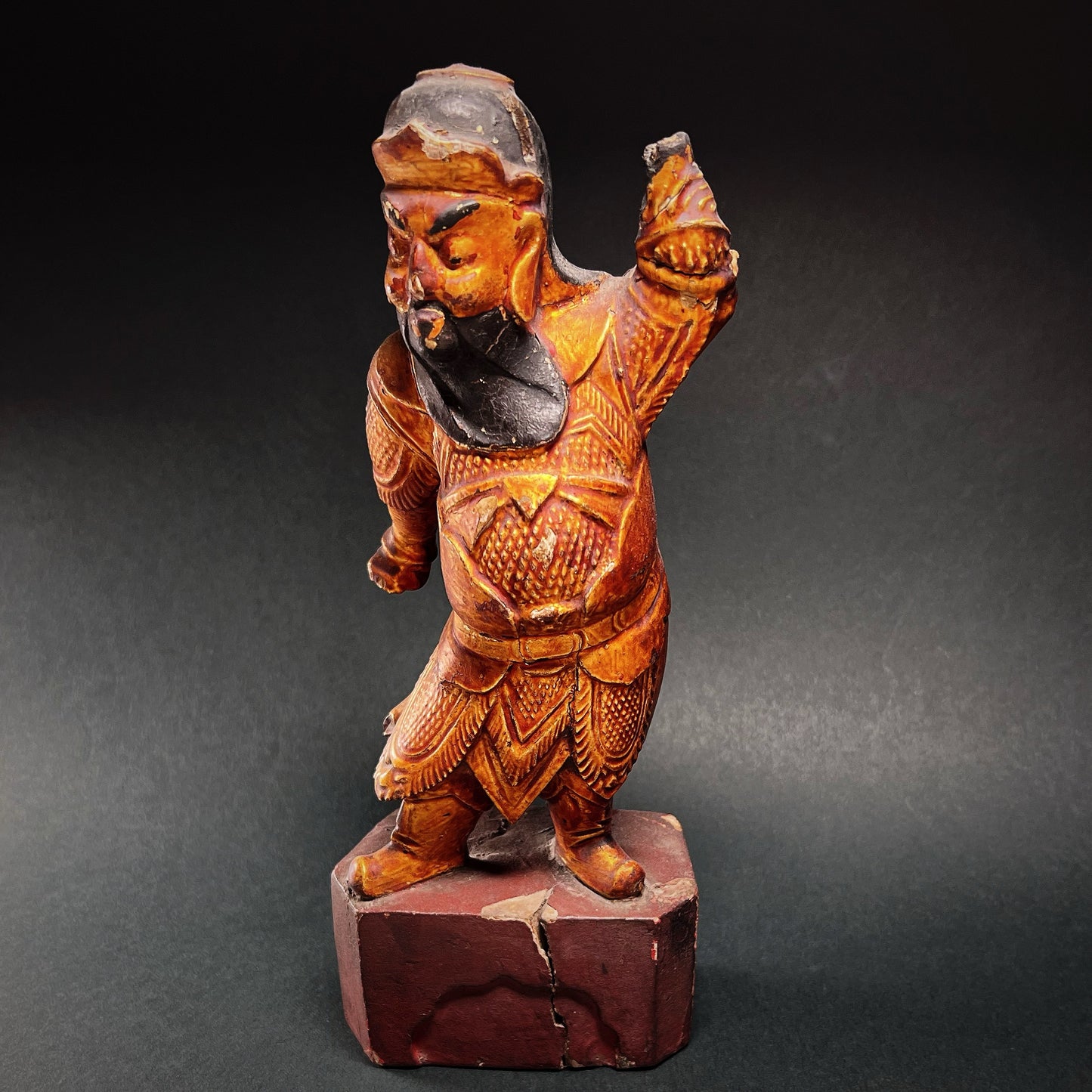
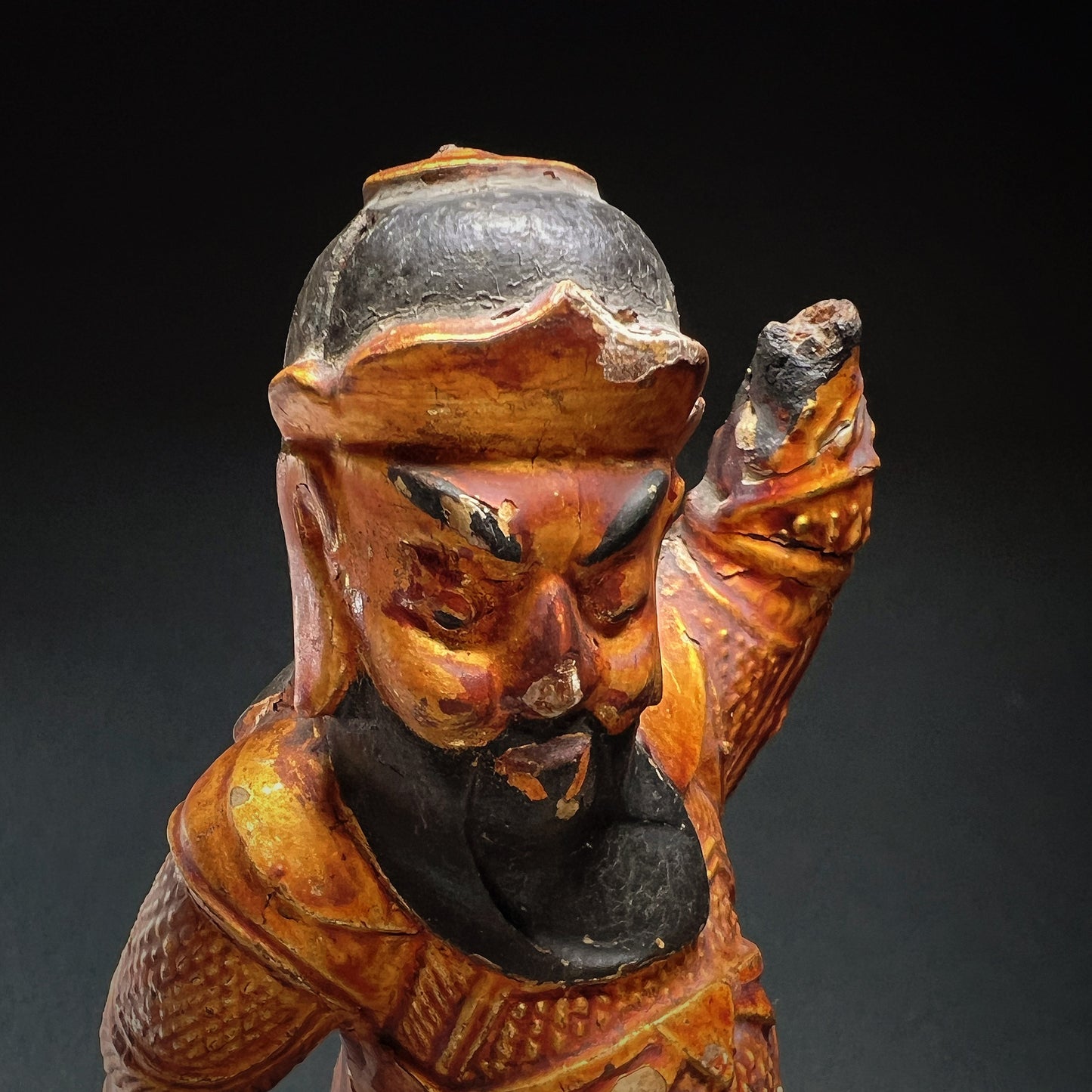
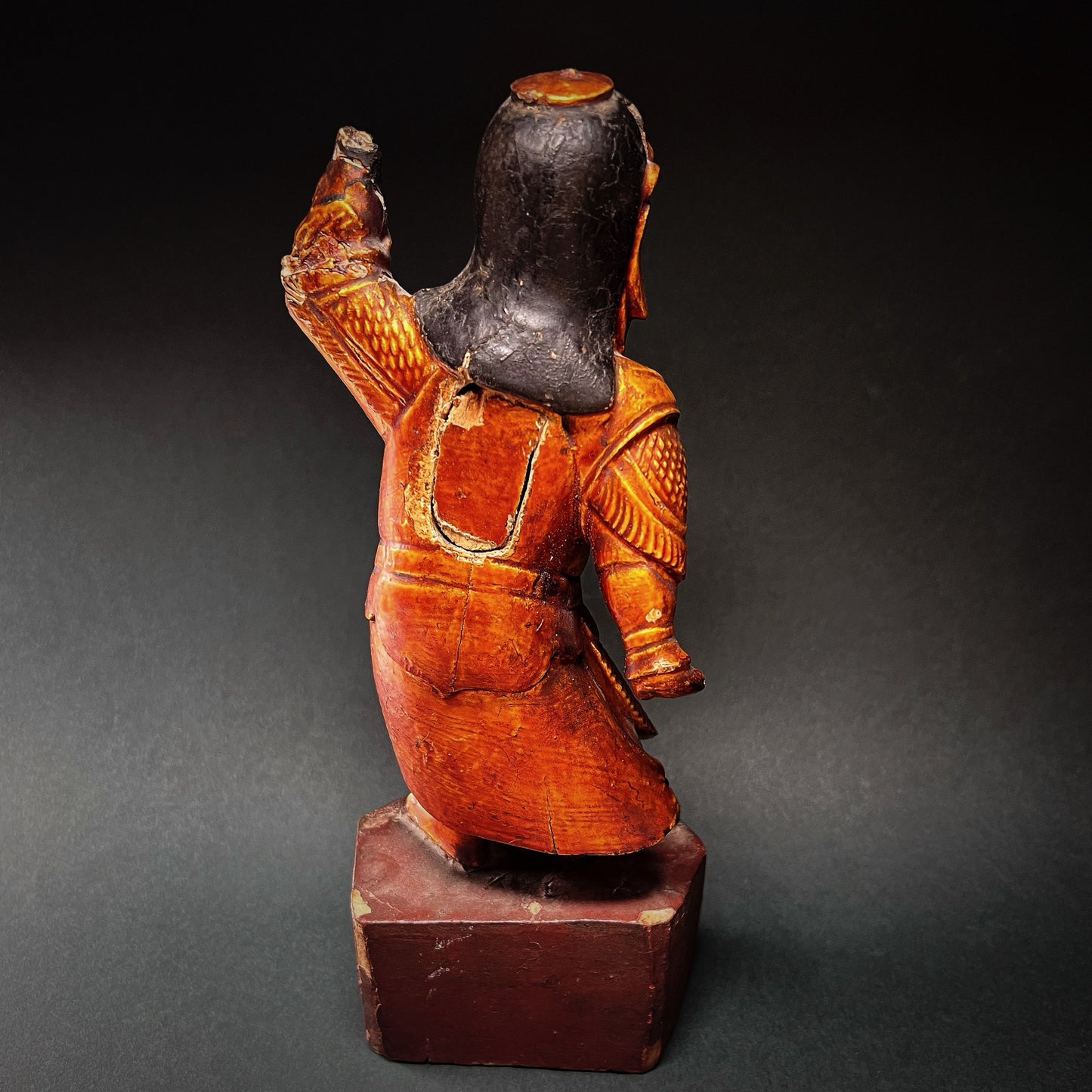

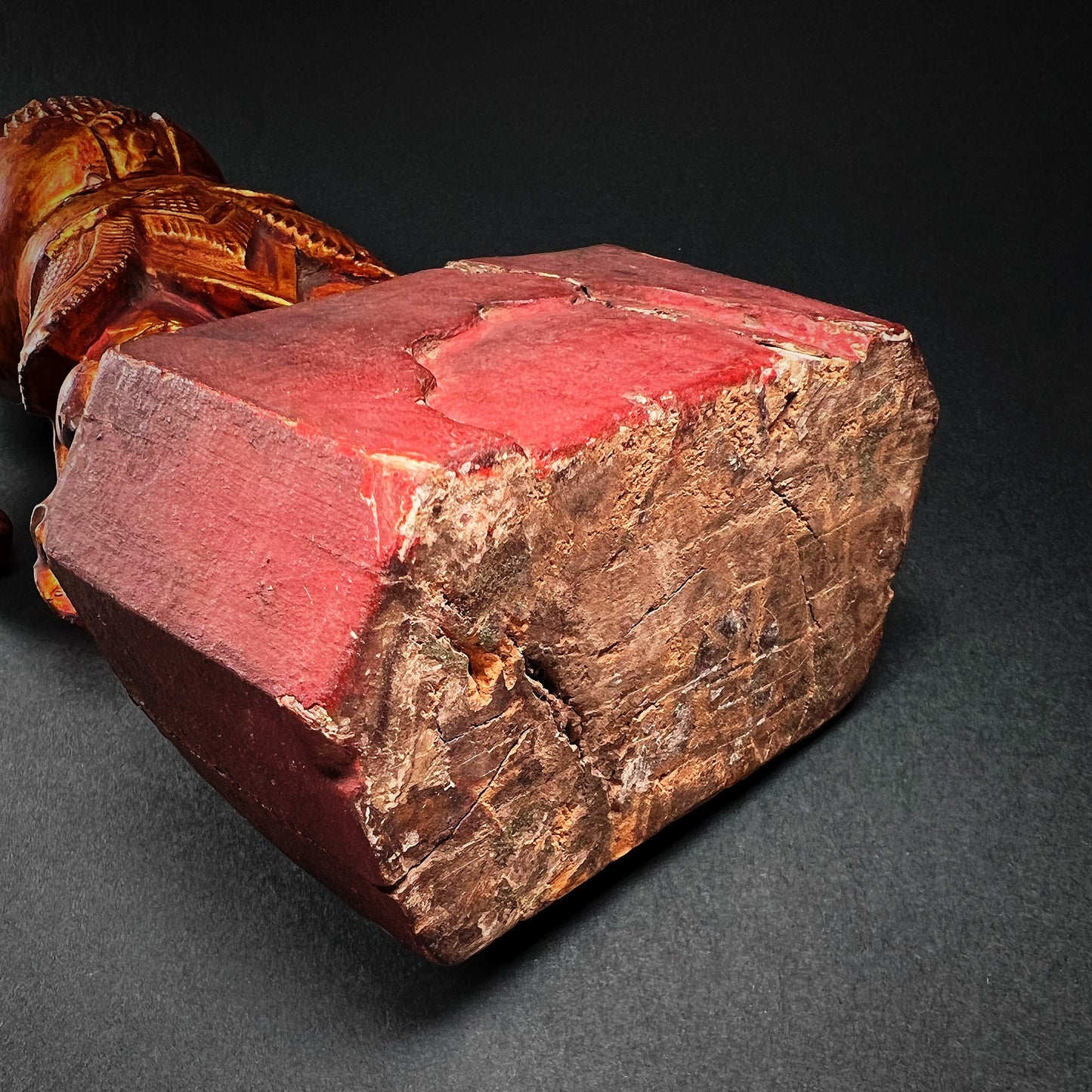
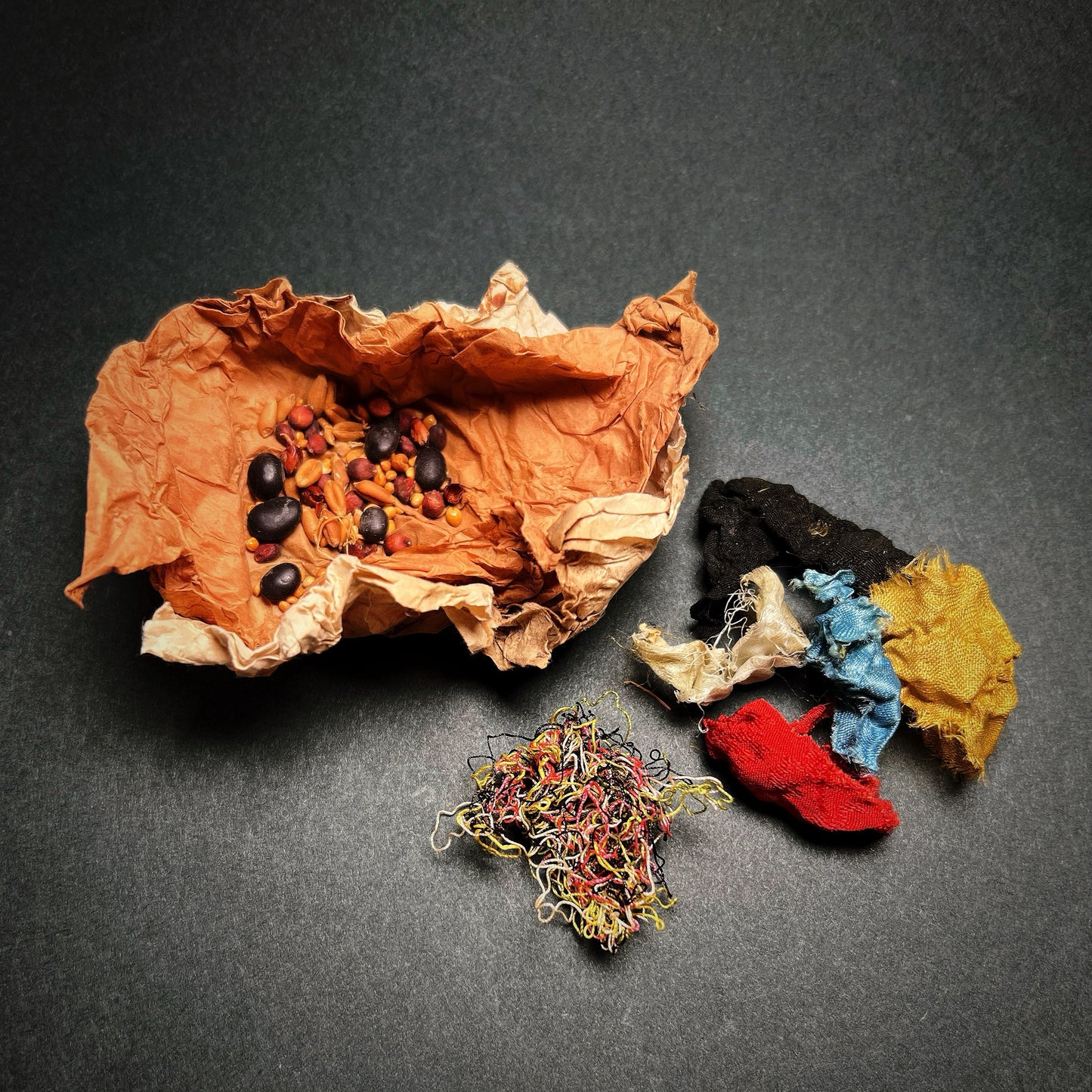
-
Shipping
The shipment will be prepared in the course of 3-5 days and dispatched via Posti Group Oyj or purchased item(s) can be picked up from our shop during the store's opening hours (Tarkk’ampujankatu 4, 00140, Helsinki, Finland). Within the Finland, all items are shipped via Posti Group Oyj unless otherwise requested. We pack the items carefully and mainly in recycled materials because we want to save nature. You will receive the tracking number for your items by e-mail.
-
Returns
Returns and exchange will be accepted within fourteen days (14) of receipt at the purchaser’s cost to include freight and packaging. Items must be returned in the same condition as when they were shipped, and will not be accepted if damaged or altered in any way. Please inform us via email (info@gotanmaailma.fi) or by calling +358408408352 before sending. We do not accept returns more than 14 days after delivery.
